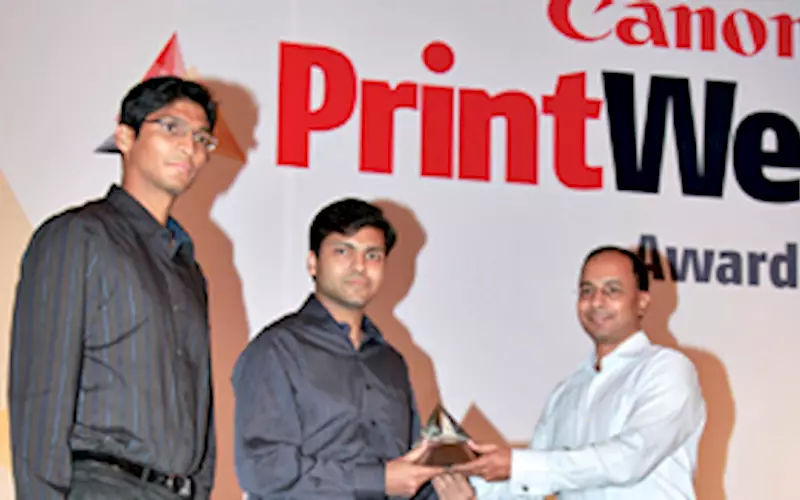Parksons Graphics: Masters of the print universe who are reclaiming the fine art of production
Ramu Ramanathan discovers that Parksons Graphics belies theories that the industry is suffering, by creating printing value for everyone.
12 May 2010 | By Ramu Ramanathan
Straddling the print world are a handful of printers who are rapidly emerging as key figures in the Indian print industry.
Chief among them is Parksons Graphics, a commercial cum magazine printer and also a noted playing cards printer.
Parksons Graphics, were the PrintWeek India POP Printer of 2009, for their L'Oreal standees which were printed on a Heidelberg CD 102 along with an Invercoate duly UV finished with pasting.
As Abhishek Kejriwal, the third-generation director at Parksons Graphics says, "the POP has been fabricated in such a way that from a distance, it looks like one single piece".
The popularity of artistic explorations and the emergence of print buyers with different expectations have modified tastes. Three samples from Parksons are a testimony to this fact.
First, is a greeting card set for 2009 which sees a combination of various effects such as pearlescent and iridiscent coating, raised UV foil stamping and more produced on multiple papers.
There is also an infinite folding leaflet which showcases how different print processes can add value to an otherwise ordinary leaflet. Second is the calendar for Transasia which sees a combination of black foil stamping plus raised UV plus pearlescent coating, along with gold silkscreen - produced on multiple paper.
Then there is a company brochure which showcases value additions (Pantone special colour, raised UV and flock processing) with four colour printing.
Then there is the 2010 planner for Roff (for Pidilite). "This", as Animesh Kejriwal, a director at Parksons states, "is a job that we truly enjoyed working on.
The customer was willing to give us a free hand to enhance the design through various print techniques." The job was printed on the Heidelberg Speedmaster CD 74 5-LX.
The cover required a number of operations like hot foil stamping, thermography, spot gloss UV and spot abrasive UV. The inside pages had laser die cutting, flock processing, textured UV, embossing, foil overprint, die cutting, glitter UV. Animesh adds: "And of course at the end of the day, you need to fold, gather and bind the pages."
Animesh is confident about 2010. He says, "The Roff Planner is a great example of a printer's role today. Good printers are going way beyond just putting ink on paper. We, as a printer, have to be able to understand the design and add subtle features to it through print."
Prudent investments
In 1957, Parksons Graphics entered the printing industry as manufacturers of playing cards. Abhishek says, "Playing cards have been the foundation of our present role as a commercial printer. And it remains an solid segment for us."
Over the years, the company continued to add capacity. Abhishek explains, "In 2008, we upgraded our pre-press workflow to Kodak's Prinergy and installed a new five-colour CD74 Heidelberg. We've added section sewing, gathering, perfect binding, as well."
Green sustainability
Parksons Graphics have also put a lot of effort into improving their collection. As Animesh Kejriwal, says, "We're much more than a printer house now." And so, Parksons has become only one of the fourth Indian printer to land FSC certification. Animesh states, "Gaining green FSC accreditation has revealed market demand for green credentials."
He adds: "The public sector and major international brands are keen to demonstrate their green credentials." Animesh is confident that "Green credentials will become a licence to trade. Today, out staff is aware about the FSC jobs. This means, the staff on the shopfloor have had to adapt change and become the force driving the change."
In-house development
One of the big changes in recent times has been the advent of MIS. Instead of investing in an outsourced MIS, Parksons has developed their own in-house MIS system 12 years ago.
"Firstly, printers have to be clear in their own mind about what they want to get from their MIS software," Animesh who is a software engineer Carnegie Mellon in USA advises. "They might want to ask what work they are more profitable on, or the cost of using different machinery or procedures."
With rising operation costs in Mumbai, Parksons is investing in a 60,000 sqft unit in Taloja which should be ready by mid-2010. "The market beckons", says Animesh. Quite clearly, Parksons is eyeing a lion's share of profits in the future.
PARKSONS GRAPHICS FACTFILE
Founded in 1957
Specialty Commercial printing, magazine printing, POPs, playing cards, etc.
Location Mumbai and Daman, plus a future unit in Taloja
Equipment Creo Trendsetter II CTP, Glunz and Jensen processor, Epson 9600 and Epson 7880, Kodak Matchprint, Gretag Macbeth Spectrophotometre, Esko Kongsberg XE 10,Heidelberg SM CD 102, Heidelberg SM 102V , Heidelberg SM CD 74 5, Perfecta Cutting, Sakurai screen printing, Stahlfolder folding, stitching, Welbound perfect binding, punching-die cutting, Kolbus 16-station gathering and Aster Astronic sewing machine
Staff 250











 See All
See All